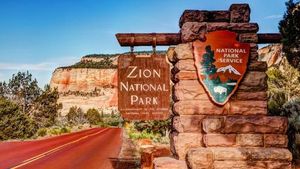As the United States government shutdown drags on through October 2025, a surprising winner has emerged: private flood insurance companies. With the federal National Flood Insurance Program (NFIP) unable to issue new policies since October 1, homeowners and businesses—especially those in flood-prone coastal regions—are turning in droves to private insurers for coverage. This sudden shift, according to reports from NPR and other sources, has triggered a boom for private companies, while also igniting a fierce debate over the future of flood insurance in America.
The impact of the shutdown is being felt most acutely in states like Florida and Louisiana, where flood insurance is not just a safety net but a requirement for securing a mortgage in high-risk zones. Andy Kasten, an insurance broker in Fort Lauderdale, described the new reality for would-be homebuyers. "We just had to write a private flood policy, and it ended up costing him 12 hundred and change. So, because we had to wait, he had to purchase the more expensive policy," Kasten told NPR, referencing a recent client who was forced to pay nearly double the premium he expected from the federal program—$1,200 instead of $700 annually.
This isn’t an isolated incident. With FEMA’s operations scaled back, private insurers have stepped into the void, offering policies to those who would typically rely on federal coverage. The result: a notable increase in private flood insurance uptake, with more policyholders opting for private coverage over federal programs, according to recent industry reports. John Dickson, CEO of Aon Edge, a private insurance company, noted, "We've seen an incredible increase in interest and activity, a great number of quotes coming in that we haven't before."
The private flood insurance market, which has only been widely available since 2019, is now accounting for an ever-growing share of the residential and commercial market. The industry’s rapid growth is due in part to its ability to provide coverage above the $250,000 limit imposed by the NFIP. For homeowners or businesses with higher-value properties, this flexibility is attractive—though it often comes at a higher cost, especially in high-risk areas.
But private insurers aren’t just copying the federal model. Companies like Neptune, which went public on the New York Stock Exchange on October 1—the very day the shutdown began—are leveraging cutting-edge technology to stand out. CEO Trevor Burgess explained in a CNBC interview, "Your house can be specifically underwritten for its risk. So, we tell the truth to consumers. If we say that it's $200 a year, it's pretty low risk. If we say it's $12,000, that's pretty high risk. And if we say no, you should move." By using artificial intelligence to analyze individual property risk, private insurers can offer more tailored pricing—sometimes lower than the federal program in low-risk areas, but often much higher in high-risk zones.
This innovation, however, comes with its own set of challenges. Critics worry about the affordability and accessibility of private flood insurance, particularly for those living in flood-prone regions. Amy Bach, executive director of the consumer advocacy group United Policyholders, told NPR, "That's what you get with a government-backed program. You get accountability. And you don't always get that in the private sector unless you sue." She pointed to the aftermath of Superstorm Sandy in 2012, when public pressure forced the NFIP to reopen many disputed claims—something she doubts would have happened with private insurers.
Another concern is the practice of "cherry-picking," where private companies insure only the lowest-risk properties, leaving the federal program to cover the riskiest—and most expensive—homes and businesses. "I think it's just going to make a challenging situation worse," Bach warned. For years, the NFIP has operated in the red, and siphoning off its least risky customers could only deepen its financial woes.
The debate over privatizing flood insurance is heating up, with industry players and policymakers weighing the pros and cons. Proponents argue that increased competition and innovation in the private sector will lead to better coverage options and services for policyholders. Private insurers, for their part, are introducing new policy options tailored to different risk profiles and leveraging digital tools to improve the customer experience. They see the shutdown as a chance to prove their value and expand their market presence.
But not everyone is convinced that the private sector can—or should—replace the federal program. Louisiana Insurance Commissioner Tim Temple stressed the importance of a robust NFIP for his state, which has the second-highest number of homes and businesses covered by the federal program after Florida. "It's imperative that we have a functioning and affordable national flood insurance program. And I don't think private industry can come in and be the answer to all of those folks," Temple told NPR. He called for not just reauthorization but a complete overhaul of the NFIP to ensure it remains affordable and effective in the long term.
One model gaining traction is a hybrid approach: Neptune recently released a study proposing that current customers be allowed to retain their NFIP policies, while new customers would be steered toward private insurers. The federal program would become "the insurer of last resort," providing coverage only to those unable to obtain a private policy. Such a system could reduce the NFIP’s financial exposure while encouraging private market innovation, but it also risks leaving vulnerable homeowners with fewer affordable options.
Meanwhile, private insurers are racing to meet the surge in demand. They’re adapting strategies, introducing innovative policy features, and using technology to streamline the purchasing process. For example, some companies now allow customers to get quotes and purchase policies entirely online, a far cry from the paperwork-heavy federal process. They’re also exploring competitive pricing strategies to make flood insurance more accessible in high-risk zones, hoping to address concerns about affordability and coverage gaps.
Still, the question remains: will this private sector boom be a temporary blip caused by the government shutdown, or is it the beginning of a permanent shift in how Americans protect themselves from flooding? The answer may depend on how quickly Congress acts to reauthorize and reform the NFIP—and whether private insurers can truly deliver on their promises of innovation, accountability, and affordability.
For now, as the shutdown continues, homeowners and businesses are left to navigate an uncertain landscape, weighing the higher premiums and tailored coverage of private insurers against the familiar, if imperfect, safety net of the federal program. The future of flood insurance in America is very much in flux, and the decisions made in the coming months could reshape the market for years to come.
As the waters rise—both literally and figuratively—one thing is clear: the stakes for American homeowners, insurers, and policymakers have never been higher.




